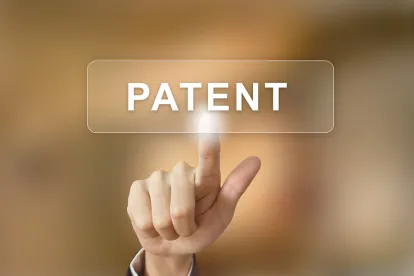A recent decision by the Federal Circuit suggests that relying on “common sense” in analyzing whether a patent is obvious in view of prior art cannot always be based on common sense alone. In a decision providing practitioners important guidance for relying on common sense in an obviousness inquiry, the Federal Circuit on August 10, 2016 handed down its decision in Arendi S.A.R.L. v. Apple Inc., No. 2015-2073, 2016 U.S. App. LEXIS 14652 *1 (Fed. Cir. Aug. 10, 2016), vacating the PTAB’s decision below. The petitioners had only relied on an expert declaration and testimony as support for their position before the PTAB that common sense rendered a patent obvious. Id. at *19-20. The Federal Circuit rejected the PTAB’s holding in favor of petitioners as “conclusory and unsupported by substantial evidence[.]” Id. at *22-23, 26-27.
The patent in this case is U.S. Patent No. 7,917,843, owned by Arendi S.A.R.L., and against which Apple, Google, and Motorola filed a petition for inter partes review (IPR). The ’843 Patent allows a user to coordinate with two computer programs: (1) to display a document with the first computer program while (2) accessing and conducting a search using a second computer program. Id. at *2. The patent discloses mechanisms for analyzing the document to identify the presence of name and address information in the document (e.g., from designators such as street, city, zip code, “Mr.,” “Mrs.” etc.), to determine if it can be used in the searches as part of the second computer program. Id. at *2-3. The claimed invention then displays the search results to the user, who can select the additional information obtained from the search for insertion into the document. Id. at *3.
Only one prior art reference was discussed on appeal, U.S. Patent No. 5,859,636 (“the Pandit reference”), which involved a computer program that recognized a phone number in a class of text in a document, and provided suggested actions to the user, such as “Add to address book.” Id. at *5-6. The Federal Circuit focused on the question whether “it would be ‘common sense’ to a person of ordinary skill in the art to search for the telephone number that is detected in a document when the ‘Add to address book’ option disclosed in Pandit is selected.” Id. at *6. The PTAB in its Final Written Decision held that the Pandit reference rendered the ’843 Patent obvious, because it is “reasonable to presume, [that] as a matter of common sense and at the time of the invention,” upon searching for the phone number in the database, the name and/or address associated with the telephone number would be displayed to the user. Id. at *8 (citing Apple Inc. v. Arendi S.A.R.L., IPR2014-00208, 2015 Pat. App. LEXIS 6053 at *10 (PTAB June 9, 2015)) (emphasis added).
The Federal Circuit reversed the PTAB’s decision, noting that while it is “true that common sense and common knowledge have their proper place in the obviousness inquiry[,]…common sense…inform[s] the analysis of obviousness if explained with sufficient reasoning.” Id. at *10 (emphasis added). The Court emphasized three important aspects of using “common sense” in an obvious analysis. First, while common sense is typically invoked to provide a known motivation to combine, it is not typically invoked to supply a missing claim limitation. Second, if common sense is invoked to supply a missing claim limitation from the prior art, the missing limitation must be “unusually simple” and straightforward—it cannot be a limitation that plays a major role in the claimed invention. Third, when common sense is invoked, it cannot be used as a “wholesale substitute for reasoned analysis and evidentiary support, especially when dealing with a limitation missing from the prior art[.]” Id. at *11-13.
Here, the petitioners argued before the PTAB that “if searching a database for data was in the prior art, then searching that database for a telephone number is merely common sense.” Id. at *20. The PTAB agreed, extrapolating from its finding that substantial evidence existed regarding searches in general to conclude that searches for a telephone number were also disclosed. Id. at 21-23. The Federal Circuit disagreed. The evidence did not support such a conclusory extrapolation, and the PTAB’s leap was a bridge too far. Id. at *23-26.
This decision underscores for practitioners that common sense, while enjoying a proper place in the obviousness inquiry, does not obviate the need for substantial evidentiary support. In particular, the Federal Circuit emphasized that petitioners should “clearly explain[] with concrete examples” the benefits of performing steps for which they are arguing would be obvious, even where “common sense” might suggest it, where the steps are not “evidently and indisputably within the common knowledge of those skilled in the art.” Id. at *23 (citations omitted). Common sense might be common, but here the Federal Circuit made clear that it cannot be unsupported and conclusory.





 />i
/>i
